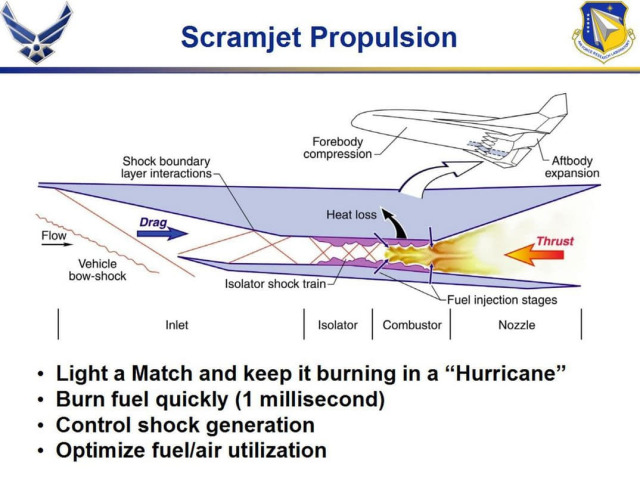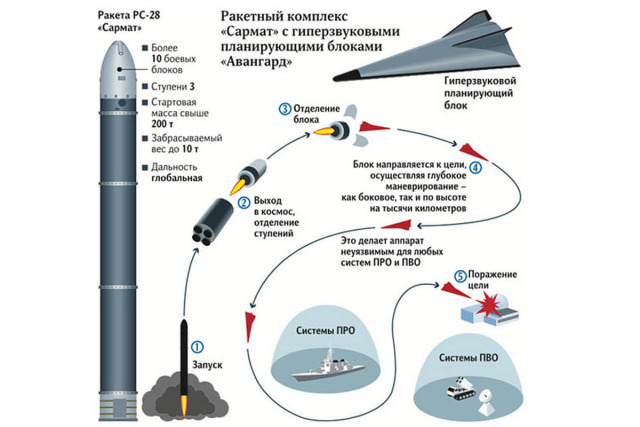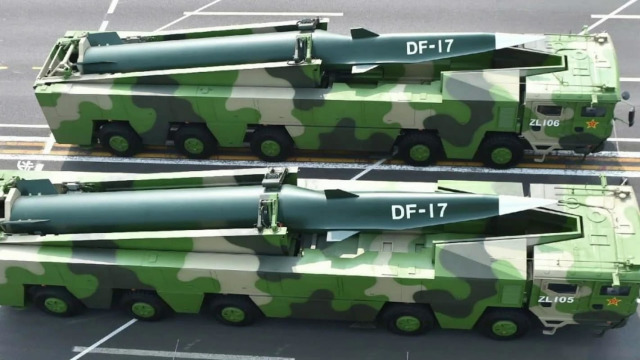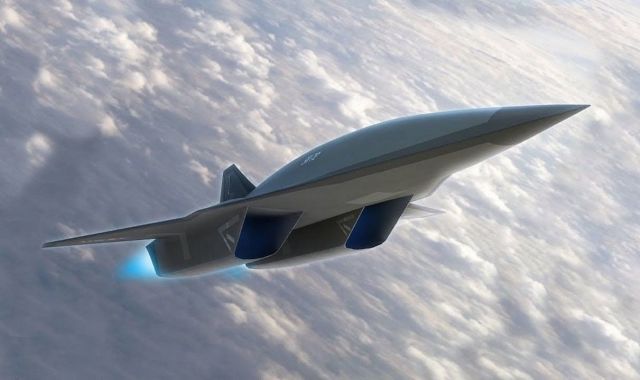The incentive for the development of aviation and rocket power plants has always been the desire for greater speed. The growing need for speeds in the atmosphere of at least Mach 5 has led to the emergence of new and innovative solutions for the so-called hypersonic flight.
Early attempts to reach Mach 5
Western experts in the field of hypersound, first of all, cite the example of the North American NASA X-15 research aircraft, which was equipped with a rocket engine and regularly reached hypersonic speed back in the 1960s. But precisely because of its applied nature, it did not represent a viable long-term solution for hypersonic flight. It is claimed that to date, no military aircraft or unmanned aerial vehicle (UAV) has made hypersonic flights.

NASA X-15 research Aircraft under the wing of a B-52 bomberIn 1986, the United States launched an ambitious program to develop the National AeroSpace Plane (NASP), a single-stage spacecraft capable of entering near-Earth orbit (SSTO).
It was planned that the Rockwell X-30, conceived as a demonstration project of advanced technologies, would be powered by an integrated hypersonic ramjet engine (GPVRD) burning liquid hydrogen.
The answer of the then Soviet Union was the Tupolev Tu-2000. It was proposed to equip it with a less complex power plant that combined four turbojet engines, a ramjet engine and two liquid rocket engines. None of these programs led to the creation of a prototype aircraft. Both NASP and Tu-2000 were discontinued in 1993.

This diagram of the US Air Force Research Laboratory shows the layout of a typical gas turbine engine and the complexity of maintaining combustion in supersonic airflow gorenjeHypersonic flight of rockets
Thus, at the moment, hypersonic flight is performed only by rockets. This level of performance is not something new - the A–4 (V-2, aka "V-2") ballistic missile, built about 80 years ago in Nazi Germany, has reached speeds approaching Mach 5. Referring to Russia's statements about attacks on several targets in Ukraine using hypersonic weapons in March, April and May 2022, Western sources note that "a short-range air-launched ballistic missile X-47M2 "Dagger" was used (it is also a version of the 9K720 Iskander ground missile, or SS-26 STONE according to the classification NATO). According to them, the Dagger has the same propulsion system and payload as a ground-based weapon.
Most ballistic missiles develop hypersonic speed, but follow a predictable trajectory. The new generation of hypersonic weapons combines high speed with the ability to maneuver in the middle or late stage of flight. This allows them to fly low enough, not follow a predictable trajectory and develop high speed to avoid defeat by missile defense means.
Hypersonic gliders
There are two main forms of hypersonic missile. A simpler method involves installing one or more uncontrolled hypersonic gliding vehicles (Hypersonic Glide Vehicles, HGVs) on a single-stage or multi-stage rocket accelerator. The second and more complex class of weapons are hypersonic cruise missiles (Hypersonic Cruise Missile, HCM) with an air-jet propulsion system.
As the name implies, the HGV gets all its energy from the initial pulse transmitted by the rocket engine. Once it is completed, the HGV will begin its glide path (planning) phase. Usually, such a device is dropped from the carrier at altitudes from about 50 km to more than 100 km. The exact altitude, speed and angle of the flight path are determined so that the HGV glides in the upper atmosphere until it reaches its target.
The aerodynamic configuration of the HGV is designed to create in a rarefied atmosphere a lifting force equal to or slightly exceeding its weight if the vehicle is maneuvering. Since it will encounter drag, the energy will begin to dissipate, which will lead to a gradual loss of speed and flight at a slowly decreasing altitude so that the increased air density can maintain the required lift.
If an extreme flight range is required, a small rocket engine or other power plant can be installed on the HGV. They will minimize the loss of speed due to drag and provide a greater degree of orientation or direction control. Inevitably, there will be a compromise between these additional features, the increased weight and the design of the device.
According to Western sources, "the Russian Avangard planning unit illustrates the simplest method of launching such systems into hypersonic flight" – installing one or more units as a payload into existing ballistic missiles. It is reported that the Avangard, originally designated Yu-71 and Yu-74, began flight tests in 2015 or 2016. For these early tests, the unit was installed on the UR-100UTTH ICBM (SS-19 Mod 3 STILETTO), and the launch was carried out from a base in the Orenburg region. The heavy ICBM R-36M2 (SS-18 Mod 5 SATAN) was launched from the same site in October 2016 – this, according to sources, was the first fully successful test.

Sarmat missile system with Avangard planning unitThe Avangard has a length of 5.4 m, a mass of about 2000 kg and can carry a nuclear or conventional warhead.
It is used as a MIRV payload in ICBMs of types UR-100UTTH, R-36M2 and the new RS-28 "Sarmat". According to Western experts, although the Avangard does not have any independent propulsion system, it is capable of performing sudden horizontal and vertical evasion maneuvers. The block is approaching the target at a speed of about 20-27 Mach.
For its Dongfeng-17 missile (DF-17, East Wind-17), China has adapted the existing DF-16 ICBM (CSS-11). This is a single-stage solid-fuel rocket with a maximum range of 800-1000 km. Instead of 1000-1500 kg of the DF-16 warhead, the DF-17 model carries the DF-ZF hypersonic glider.

BR DF-17 with hypersonic gliding unit DF-ZFUsing an existing ballistic missile as an accelerator for the HGV payload is probably the simplest engineering solution that allows, if necessary, to modify the missile for its new role.
In September 2021, North Korea conducted flight tests of a hypersonic payload similar in configuration to the Chinese DF-17. It is assumed that it was launched using a shortened version of the Korean medium-range ballistic missile HWASONG-12.
To be continued…
According to the materials of the resource euro-sd.com

